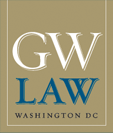Document Type
Article
Publication Date
2021
Status
Accepted
Abstract
In November 2021, the President’s Working Group on Financial Markets (PWG) issued a report analyzing the rapid expansion and growing risks of the stablecoin market. PWG’s report determined that stablecoins pose a wide range of potential hazards, including the risks of inflicting large losses on investors, destabilizing financial markets and the payments system, supporting money laundering, tax evasion, and other forms of illicit finance, and promoting dangerous concentrations of economic and financial power. PWG called on Congress to pass legislation that would require all issuers of stablecoins to be banks that are insured by the Federal Deposit Insurance Corporation (FDIC). PWG also recommended that federal agencies and the Financial Stability Oversight Council should use their “existing authorities” to “address risks associated with payment stablecoin arrangements . . . to the extent possible.”
At present, stablecoins are used mainly to make payments for trades in cryptocurrency markets and to provide collateral for derivatives and lending transactions involving cryptocurrencies. However, technology companies are exploring a much broader range of potential uses for stablecoins. In October 2021, Facebook launched a “pilot” of its Novi “digital currency wallet,” which uses the Pax Dollar stablecoin as its first digital currency and allows customers to make person-to-person payments within and across national borders. The launch of Novi indicates that stablecoins could potentially become a form of “private money” that is widely used in consumer and commercial transactions. PWG’s report calls on federal agencies and Congress to take immediate steps to establish a federal oversight regime that could respond effectively to the dangers created by stablecoins.
This paper strongly supports three regulatory approaches recommended in PWG’s report. First, the Securities and Exchange Commission (SEC) should use its available powers to regulate stablecoins as “securities” and protect investors and securities markets. However, the scope of the SEC’s authority to regulate stablecoins is not clear, and federal securities laws do not provide adequate safeguards to control the systemic threats that stablecoins pose to financial stability and the payments system.
Second, the Department of Justice (DOJ) should designate stablecoins as “deposits” and should bring enforcement actions to prevent issuers and distributors of stablecoins from unlawfully receiving “deposits” in violation of Section 21(a) of the Glass-Steagall Act. Section 21(a) offers a promising avenue for regulatory action, but its provisions contain uncertainties and gaps and do not provide a complete remedy for the hazards created by stablecoins. The most significant gap in Section 21(a) allows state (and possibly federal) banking authorities to charter special-purpose depository institutions that could issue and distribute stablecoins without obtaining deposit insurance from the FDIC.
Third, Congress should adopt legislation mandating that all issuers and distributors of stablecoins must be FDIC-insured banks. That requirement would compel all stablecoin issuers and distributors and their parent companies to comply with federal laws that protect the safety, soundness, and stability of our banking system and obligate banks to operate in a manner consistent with the public interest. Requiring stablecoin issuers and distributors to be FDIC- insured banks would also maintain the longstanding U.S. policy of separating banking and commerce. It would prevent Facebook and other Big Tech firms from using stablecoin ventures as building blocks for “shadow banking” empires that would erode consumer protections, impair competition, subvert the effectiveness of financial regulation, and potentially unleash systemic crises across our financial and commercial sectors during severe economic downturns and financial disruptions.
GW Paper Series
2022-01
SSRN Link
https://ssrn.com/abstract=4000795
Recommended Citation
41 Banking & Financial Services Policy Report No. 2 (Feb. 2022), at 1-20.
